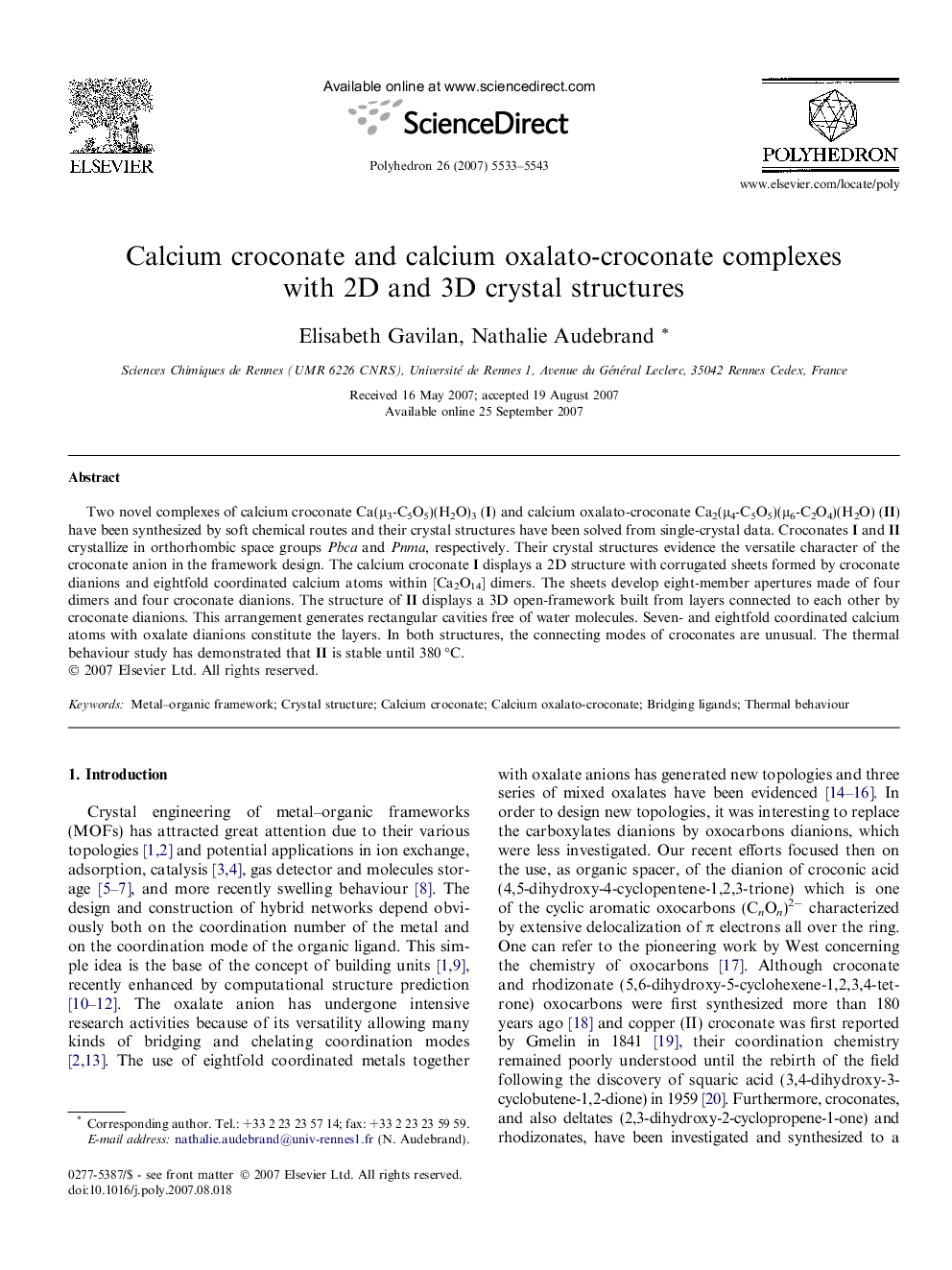| Article ID | Journal | Published Year | Pages | File Type |
|---|---|---|---|---|
| 1335388 | Polyhedron | 2007 | 11 Pages |
Two novel complexes of calcium croconate Ca(μ3-C5O5)(H2O)3 (I) and calcium oxalato-croconate Ca2(μ4-C5O5)(μ6-C2O4)(H2O) (II) have been synthesized by soft chemical routes and their crystal structures have been solved from single-crystal data. Croconates I and II crystallize in orthorhombic space groups Pbca and Pnma, respectively. Their crystal structures evidence the versatile character of the croconate anion in the framework design. The calcium croconate I displays a 2D structure with corrugated sheets formed by croconate dianions and eightfold coordinated calcium atoms within [Ca2O14] dimers. The sheets develop eight-member apertures made of four dimers and four croconate dianions. The structure of II displays a 3D open-framework built from layers connected to each other by croconate dianions. This arrangement generates rectangular cavities free of water molecules. Seven- and eightfold coordinated calcium atoms with oxalate dianions constitute the layers. In both structures, the connecting modes of croconates are unusual. The thermal behaviour study has demonstrated that II is stable until 380 °C.
Graphical abstractTwo new calcium croconates complexes Ca(μ3-C5O5)(H2O)3 (I) and Ca2(μ4-C5O5)(μ6-C2O4)(H2O) (II) have been prepared. The 2D framework of I is built from layers of [Ca2O14] dimers and croconate dianions. In II layers made of CaO7/CaO8 polyhedra and oxalate dianions are connected through croconates. Oxalato-croconate II is stable until 380 °C.Figure optionsDownload full-size imageDownload as PowerPoint slide
